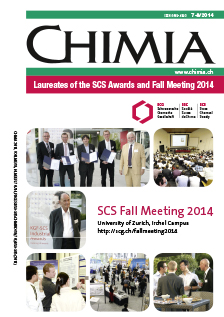Combining NHC bis-Phenolate Ligands with Oxophilic Metal Centers: A Powerful Approach for the Development of Robust and Highly Effective Organometallic Catalysts
DOI:
https://doi.org/10.2533/chimia.2014.500Keywords:
N-heterocyclic carbene, Organometallic catalysis, Ring-opening polymerization, Transition metal complexesAbstract
The present paper describes an overview of a novel family of tridentate NHC pincer ligand in which two phenoxide moieties are directly connected to the nitrogen atoms of a central N-heterocyclic carbene. It was envisioned that such a structure might be suitable for coordination to a variety of metal centers across the periodic table, including oxophilic metals. Various metal complexes bearing such ligand are indeed readily accessible in high yields via straightforward routes. Interestingly, a robust zirconium–NHC complex was found to polymerize rac-lactide in a highly controlled, living and stereoselective manner to afford heterotactic PLA.Downloads
Published
2014-08-27
How to Cite
[1]
S. Bellemin-Laponnaz, S. Dagorne, R. Dümpelmann, P. Steffanut, Chimia 2014, 68, 500, DOI: 10.2533/chimia.2014.500.
Issue
Section
Scientific Articles
License
Copyright (c) 2014 Swiss Chemical Society

This work is licensed under a Creative Commons Attribution-NonCommercial 4.0 International License.







